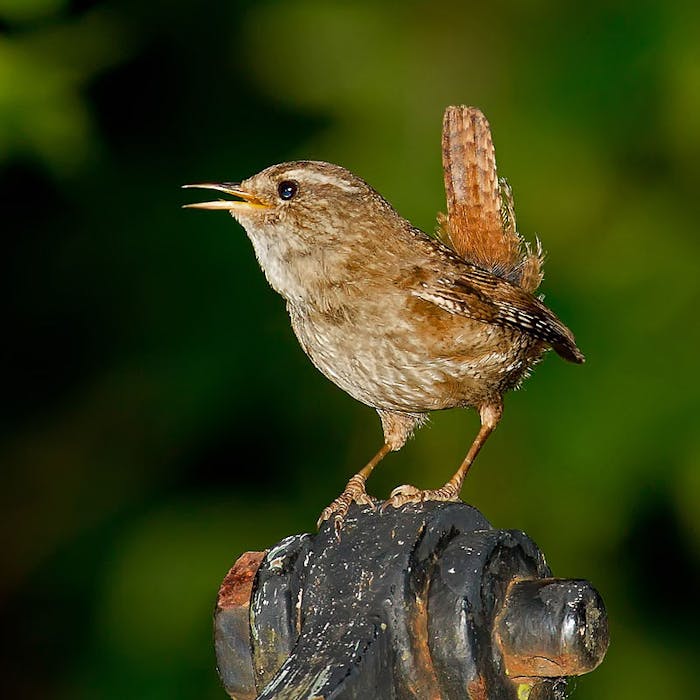
The wren - diminutive King of the Birds
The European wren delights in the bizarre scientific name of Troglodytes troglodytes, and is one of the smallest birds in the UK. It is also thought to be the most common breeding bird in the UK with 8.5 million breeding pairs.
Our wren, the European wren, is the only species of wren found outside the Americas, and is present across most of the northern hemisphere. The bird is easily identified by its small size, brown colouring, and short perky upright tail. It has a big voice and beautiful song.
Wrens eat spiders and insects which they find while hopping and dashing along the ground and probing in crevices with their long thin bill. Their scientific name, Troglodytes, means “cave dweller” in reference to this behaviour or to their delicately constructed nests which have only a small opening.
An adult wren weighs about the same as a £1 coin. They are the lightest birds found in Britain the exception of the firecrest and goldcrest.
The birds are thought to live about two years in the wild. Males mate with several females and most are strongly territorial, at least during the breeding season. Males construct from 6-12 different nests which the females will choose and then line with moss, leaves or feathers.
The wren lays between one and nine eggs which only the female incubates. Only a minority of males help feed the young chicks.
There are a number of subspecies of wren, including the Fair Isle wren (Troglodytes troglodytes Fridariensis) and the St Kilda wren (Troglodytes troglodytes hirtensis). Both are endemic breeding birds of their respective isles in Scotland.
The wren appeared on the smallest British coin, the farthing.
The wren has been widely acknowledged for many centuries as rather special. The notion that, by guile, it proved itself to be the king of the birds is found throughout Northern European folklore, including amongst the Druids of ancient Britain. Amazingly, similar ideass have been recorded in 13th-century Jewish writing, in India, in central Africa, in Japan and among some North American tribes.
Perhaps because of the wren's place in pagan legend, there was some antipathy to the bird in Christian circles. Wren hunts, which took place between Christmas and Epiphany, were once an annual ritual in rural Britain and northern Europe.
Further reading
Links to external websites are not maintained by Bite Sized Britain. They are provided to give users access to additional information. Bite Sized Britain is not responsible for the content of these external websites.
